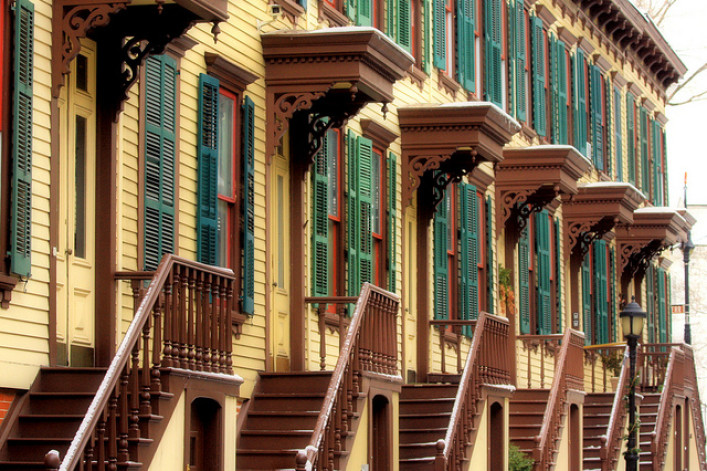A landmarked home is quaint, but not so practical

Living in a landmarked building or house has a certain cachet—period details, a rich history and, presumably, preservation of the aforementioned qualities—but if you're looking to renovate (or even do minor upgrades), the city designation can cause serious headaches. Usually, you have to get permission for alterations from the Landmarks Preservation Commission, which sets strict rules as to what you can do. But just last week about 100 New York City homeowners learned that their homes—which had been in a sort of Landmarks limbo—might never get the agency's imprimatur.
This could be good news for owners and potential buyers as well, the New York Times explains. For one, owners can go wild with paint on the exteriors (landmarked structures have to maintain the original shade), and install updates like windows or clapboards without navigating a bureaucracy. Those who want to make serious changes to their homes—like adding an extra floor, deck or even a pool—may actually see their dreams realized. Altogether, that could increase property values and, potentially, broaden the pool of buyers.
“We’d love to see it preserved," one Staten Islander whose home may or may not end up on the landmarks list tells the Times, "but maybe let’s finish the rest of the renovations first.”
Related:
7 things to consider before buying in a landmarked building
10 things to consider before buying a brownstone
Ask an Expert: Renovating in an about-to-be landmarked building
























